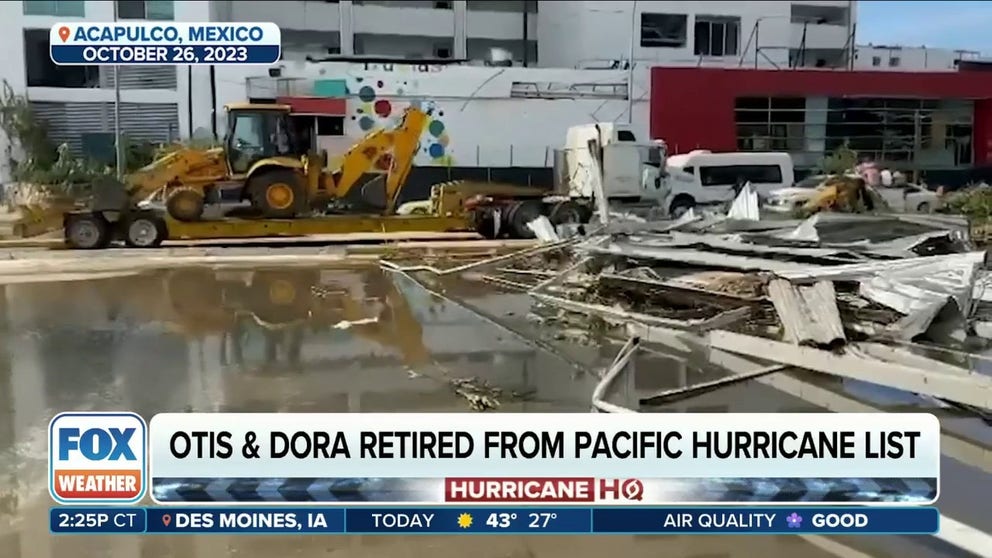What is a Category 3 hurricane?
According to NOAA, well-built homes can sustain significant damage, and coastal communities can experience a storm surge of 9-12 feet. Damage to utilities is often widespread and can last weeks. The 2000s were chalked full of Category 3 strikes, which included Hurricanes Ivan, Jeanne, Dennis, Katrina, Rita and Wilma.
Hurricane names Dora and Otis retired
The WMO voted to retire North Eastern Pacific hurricane names Dora and Otis. For the first time since 2014, the committee did not retire any Atlantic names.
A hurricane with maximum sustained winds of 111-129 mph is considered to be a Category 3 cyclone on the Saffir-Simpson Hurricane Wind Scale.
Once a hurricane strengthens into Category 3 storm it is considered to be a major hurricane.
The wind scale does not take into account flooding, erosion, tornadoes or storm surge that are often deadly during a Category 3 hurricane.
According to NOAA, well-built homes may incur major damage and many trees will snap and block roadways.
Power outages in coastal and inland communities are usually substantial, with restoration efforts taking weeks to complete.
Along the coast, a Category 3 hurricane can produce a storm surge from 9 to 12 feet, which can propagate inland along rivers and creeks. Large waves along the coast can cause severe erosion and devastation of oceanfront properties.
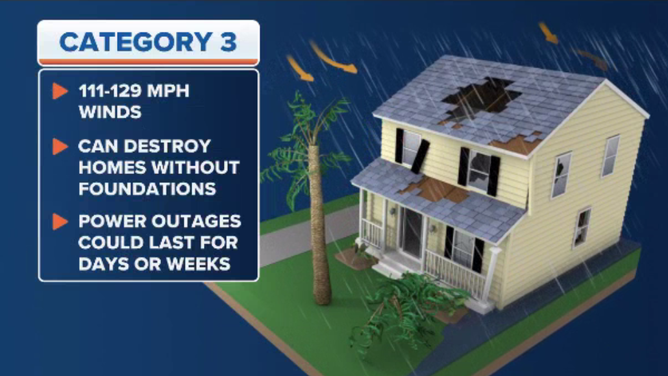
Category 3 hurricane explainer
(FOX Weather)
7 FACTS TO KNOW ABOUT HURRICANES
Prior to the arrival of a storm, widespread evacuations are issued, which extend many miles inland.
After the passage of a Category 3 hurricane, clean-up of debris may take several months.
Once sustained winds are greater than 129 mph, a hurricane is considered to be a Category 4 on the Saffir-Simpson scale.
A Category 4 storm is capable of producing devastating to catastrophic damage, and similar to a Category 3, the cyclone is considered to be a major storm.
On average, three cyclones strengthen into a Category 3 hurricane every season, with the first forming around September 1 and the last towards the end of October.
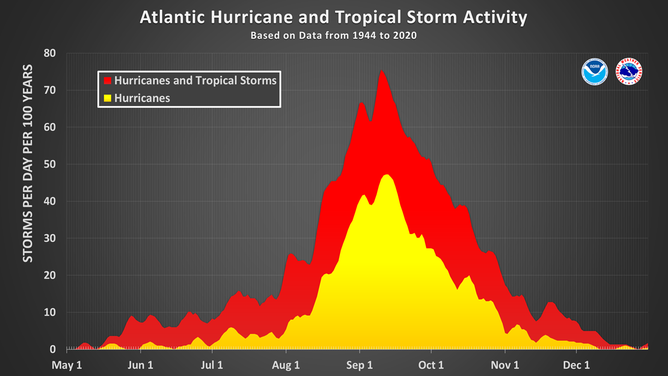
This chart shows the amount of tropical cyclone activity, in terms of named storms and hurricanes, that occurs in the Atlantic Basin on each calendar day between May 1 and Dec. 31. Specifically, it shows the number of hurricanes (yellow area) and the combined named storms and hurricanes (red area) that occur on each calendar day over a 100-year period. The chart is based on data from the 77-year period from 1944 to 2020 (starting at the beginning of the aircraft reconnaissance era) but normalized to 100 years. The official hurricane season for the Atlantic Basin is from June 1 to Nov. 30, but tropical cyclone activity sometimes occurs before and after these dates, respectively. The peak of the Atlantic hurricane season is Sept. 10, with most activity occurring between mid-August and mid-October.
(National Hurricane Center / NOAA)
Memorable Category 3 strikes on the U.S.
Hurricane Zeta (115 mph) – 2020
- Location: Cocodrie, Louisiana
- U.S. damage: $3.9 billion
- The hurricane was the twenty-seventh named cyclone of the 2020 season, and its name was used from a supplemental list from the Greek alphabet. Initially, the cyclone was declared a Category 2 at landfall, but that was upped to a Category 3 by a post-review by the National Hurricane Center. The late-season hurricane caused significant damage from the Gulf Coast through North Carolina.
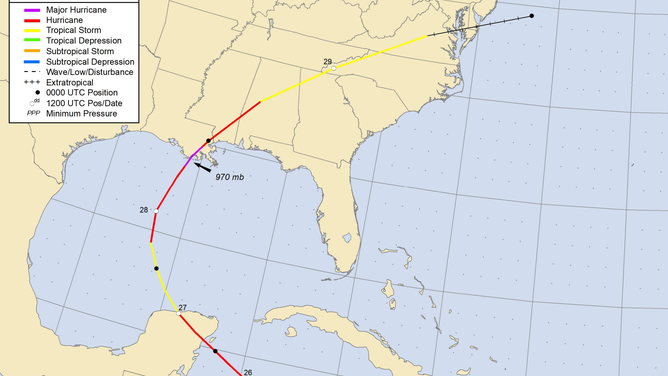
Hurricane Zeta track (2020)
(NOAA)
Hurricane Wilma (120 mph) – 2005
- Location: Collier County, Florida
- U.S. damage: $19 billion
- Hurricane Wilma holds the record for being the strongest cyclone in the Atlantic basin. In 2005, the minimum central pressure dropped to 882 millibars. The hurricane weakened to Category 3 strength before making landfall in Southwest Florida. The storm caused at least 30 deaths around the state and significant power outages lasted for weeks. Many of the Florida Keys were inundated by a storm surge of 4-8 feet.
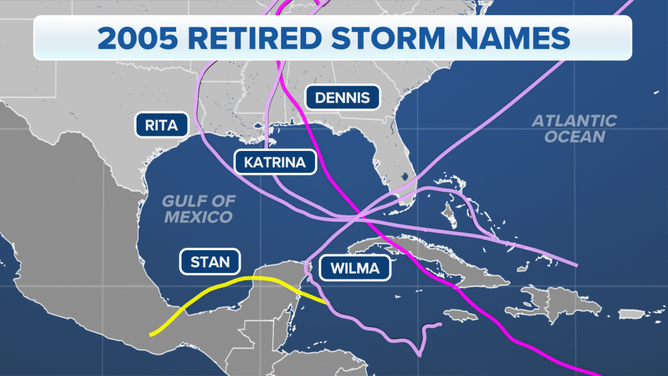
The tracks of 2005's five retired hurricanes: Dennis, Katrina, Rita, Stan and Wilma.
(FOX Weather)
Hurricane Katrina (125 mph) – 2005
- Location: Buras, Louisiana
- U.S. damage: $108 billion
- Hurricane Katrina strengthened into a Category 5 storm while over the Gulf of Mexico but weakened into a Category 3 before landfall in southeastern Louisiana. The failure of dams and a significant storm surge around New Orleans caused around 75% of the region to flood. Katrina holds records for being the costliest hurricane in U.S. history and the deadliest weather event in modern history.
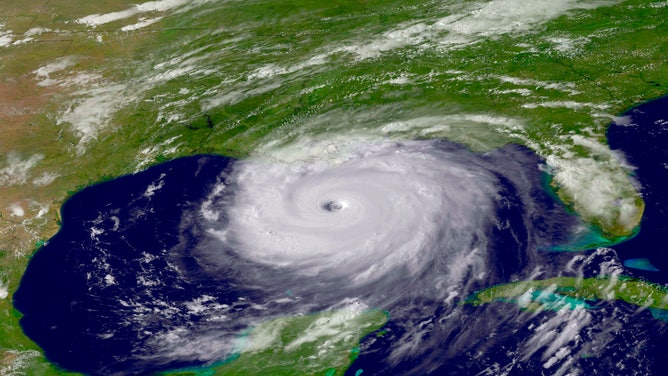
Hurricane Katrina caused severe destruction along the Gulf coast from central Florida to Texas.
(Universal History Archive/Universal Images Group / Getty Images)
